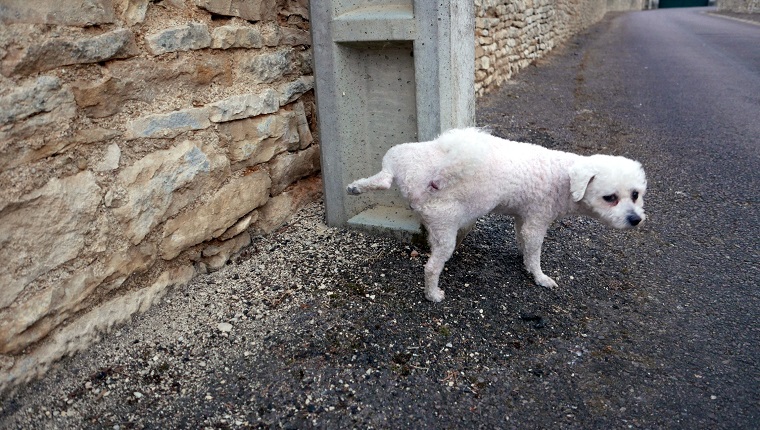Pyelonephritis in dogs is a bacterial infection of the ureter in the kidney, which is part of the upper urinary tract. It’s generally caused by a lower urinary tract infection (UTI) that migrates upward toward the kidney, but it can have other causes, as well.
This type of UTI usually happens when there’s a disruption in the muscles of the urinary tract, the blood flow to the kidneys, or the valves between the kidneys and the ureters. Most dogs show no symptoms of an upper UTI, but they may show signs of a lower UTI.
If you suspect your dog has pyelonephritis or another UTI, consult your veterinarian so that they can form a proper diagnosis and prescribe treatment. Here is what you should know about the symptoms, causes, and treatments for pyelonephritis in dogs.
Symptoms Of Pyelonephritis In Dogs

Most dogs will not show clinical symptoms of upper UTIs such as pyelonephritis, though they commonly show signs of lower UTIs. This is because pyelonephritis is most often caused by a lower UTI that has migrated upward.
If you see the following symptoms of a UTI, seek veterinary attention:
- Excessive drinking or urinating
- Difficulty urinating
- Pain or straining while urinating
- Bloody or foul-smelling urine
- Having accidents in the house, even if house trained
- Abdominal or back pain
- Lethargy
- Loss of appetite
- Vomiting
- Diarrhea
- Fever
Causes Of Pyelonephritis In Dogs

The most common causes of pyelonephritis in dogs are E. Coli or Staph infections that migrate from the lower urinary tract upwards. Other bacteria may also be responsible for the infection.
Occasionally, fungal infections may cause the condition. Sometimes kidney stones may be another cause. It’s rare for the cause to be a bloodstream infection.
Although dogs of any age or breed may develop the condition, lower UTIs are more common in female dogs than males due to their anatomy. This makes upper UTIs more common in females, as well.
There are a few disorders that may make pyelonephritis more likely to develop. Ectopic ureters, for example, is a condition where the ureters don’t properly connect to the bladder. Vesicoureteral reflux happens when the urine flows back from the bladder into the ureters. Renal dysplasia is an abnormality in the kidneys from birth.
Other issues that may increase the risk of pyelonephritis in dogs include the following:
- Diabetes mellitus
- Cushing’s disease
- Steroid use
- Renal failure
- Catheterization of the urethra
- Retaining urine
- Bladder stones
Treatments For Pyelonephritis In Dogs

Treatment for pyelonephritis in dogs generally includes antibiotics to fight the bacterial infection. Usually vets prescribe these for four to six weeks.
In cases where the UTI causes septicemia or dogs show signs of kidney failure, hospitalization may be necessary. Dogs who have kidney disease may require special dietary changes as part of ongoing treatment. Sometimes vets may provide intravenous fluids to dogs who suffer from dehydration.
Vets treat the underlying causes of the UTI, as well. If there’s a blockage, especially one caused by stones, the dog may need surgery. It’s important to get to your vet if you see the signs of a UTI.
Pyelonephritis can be a sign of a blockage or another serious issue that could become life-threatening if it goes untreated.
Has your dog ever had pyelonephritis? How did your vet treat it? Let us know in the comments below!









